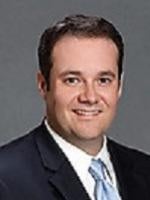In Atlantic Richfield Company v. Christian, 2020 WL 1906542 (U.S. April 20, 2020), the U.S. Supreme Court (SCOTUS), in portions of its opinion reached by an 8-1 and 7-2 majority, respectively, held that 1) state law claims for damages to private property can survive a Federal Comprehensive Environmental Response, Compensation and Liability Act (CERCLA) directed cleanup and 2) landowners who have contamination on their property related to a nearby CERCLA site are potentially responsible parties (PRPs) under CERCLA. Because of the second holding, while the Court acknowledged that the 98 landowners of property adjacent to a Superfund site had their own independent claims under state law, any remediation plan proposed by the landowners was subject to Environmental Protection Agency (EPA) oversight and approval as part of CERCLA’s clear delegation of authority to ensure remedial actions are comprehensive and consistent for facilities subject to CERCLA. This client alert will briefly discuss the substance of both holdings and review what potential impacts this opinion might have on other categories of landowner private damages actions.
It is important to note that in this case, the Atlantic Richfield Company (ARCO) was for decades the principal PRP (or defendant) responsible for cleaning up a vast Superfund site under an EPA order and a settlement. EPA follows its National Contingency Plan (NCP) at 40 CFR 300 et seq. for cleanups. This is a detailed process involving many studies and consideration of human health and the environment, cleanup standards, permanency, cost, alternatives, and public and state input. In other words, EPA was heavily involved in the site. ARCO had expected a bar to further cleanup litigation, but apparently adjacent lands were not adequately evaluated in the EPA process.
The main jurisdictional issue in the case deals with whether state law claims can survive a Superfund cleanup. In an 8-1 decision, SCOTUS determined they can. [3] Section 113(b) of CERCLA provides that federal courts have exclusive jurisdiction over CERCLA, and Section 113(h) precludes federal judicial pre-enforcement review of any challenges to any “removal or remedial actions,” except in limited circumstances not pertinent here. Further, Section 122(e)(6) of CERCLA states that “no…[PRP] may undertake any remedial action” without EPA approval. The Montana Supreme Court ruled that CERCLA did not bar the state lawsuit and that landowners did not need EPA approval to pursue their cleanup plan. SCOTUS found that CERCLA did not strip state courts of jurisdiction, as the plain meaning of Section 113(h) is that it applies only to federal courts and federal law (like CERCLA), and not to state courts and claims arising under state law. SCOTUS found that sections 113(b) and (h) overlap but do not always apply in the same circumstances.
While SCOTUS agreed with Montana that state law claims can survive, it disagreed that the landowners could pursue an independent cleanup plan without EPA oversight [4] In reaching this conclusion, SCOTUS determined the Montana Supreme Court erred when it found that landowners were not CERCLA PRPs. The Court found that landowners of a contaminated site, even if the source of contamination is solely off-site activity (like the smelting operations here), were PRPs under CERCLA. Such landowners remain PRPs for purposes of proposing or carrying out cleanup plans of their own property, even if a potential CERCLA claim was time barred against them. These particular landowners also did not qualify for other cleanup exemptions under CERCLA (e.g., exempt contiguous property owners). This latter holding meant that the landowners, even though they were not liable to EPA, had to have their cleanup plan approved by EPA. In evaluating the landowners’ cleanup plan, the Court noted that several items exceeded EPA requirements at the site for protecting public health and the environment. For example, while the EPA cleanup plan set a maximum contamination of 250 parts per million for arsenic, the landowners set the maximum at 15 parts per million. [5] In this scenario, it is doubtful that the landowners’ plan would receive approval from EPA.
In fact, such EPA approval is probably a doubtful scenario in most hypothetical private remediation suits because EPA’s cleanup process is rigorously outlined in the federal NCP. EPA analyzes cleanup alternatives and decides on a balanced approach to setting levels of cleanup. EPA would rarely approach under federal laws the pristine levels desired by adjacent landowners under state law.
What additional scenarios could this ruling apply to? There are several. For instance, partial cleanup of Brownfields under EPA-approved state voluntary cleanup plans still may leave new owners of the site exposed to contamination claims from adjacent lands. Private cleanups under state or common law should be unaffected by the Court’s ruling, but adjacent landowners will still have rights under federal or state laws regarding the spread of contamination onto their lands. Private cleanups under CERCLA will have to follow subpart H of the NCP for a CERCLA-quality (not pristine) cleanup, with adjacent landowners retaining their rights as well. CERCLA sites that include historic refinery sites or gas processing plants may be implicated even more so by ARCO. EPA approval of a cleanup plan is only required of a listed Superfund site.
One major takeaway from ARCO is the importance of negotiating with the agency or other PRPs for protection or indemnity from adjacent landowner actions to the extent possible.
[1] CERCLA is the Comprehensive Environmental Response, Compensation, and Liability Act of 1980.
[2] The Superfund site at issue was the Anaconda Copper Mining Company smelter facility built between 1884 and 1902 just outside Butte, Montana. The largest smelter rose 585 feet into the sky — a height taller than that of the Washington Monument. Atlantic Richfield purchased Anaconda in the 1970s, and the facility closed by 1980. The facility, along with more than 300 square miles surrounding it, was one of the inaugural Superfund National Priority List sites designated by EPA after passage of CERCLA. This designation occurred in 1983. (See part I.B of Chief Justice Roberts’ majority opinion, 2020 WL 1906542 at *3.) Cleanup if forecast to be completed in 2025. The adjacent landowners owned sites technically within the ARCO Superfund site, but they were not remediated.
[3] Justice Alito concurred with the other portions of the opinion, including the portion that holds landowners to be PRPs, but filed a brief dissent on the issue of jurisdiction of the state and federal courts for the claims at issue in this action. Alito wrote that the question of whether state courts could entertain certain “challenges” to EPA-approved cleanup plans need not have been answered that day. See J. Alito, dissent at 2020 WL 1906542 at *13.
[4] While seven of the justices joined this portion of the opinion, including Justice Alito, Justices Thomas and Gorsuch dissented, writing that such a reading of CERCLA “strips away ancient common law rights from innocent landowners and forces them to suffer toxic waste in their backyards, playgrounds, and farms.” See J. Gorsuch, dissenting opinion, 2020 WL 1906542 at *22.
[5] See discussion in part I.C. of C.J. Robert’s majority opinion.





 />i
/>i

